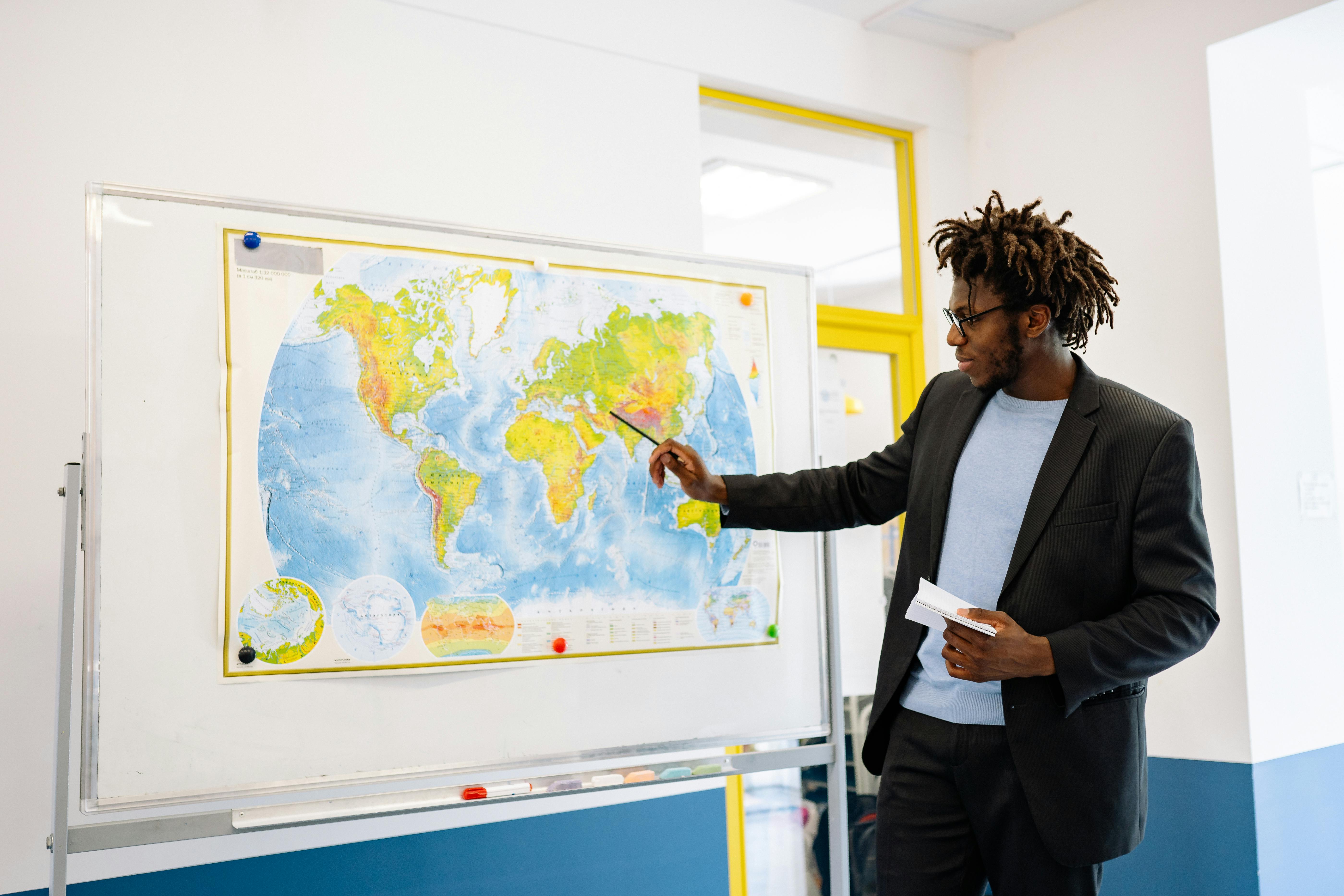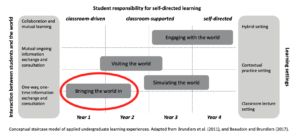To Be What the World Needs, We Need to Bring the World Into the Classroom
 Summary: Bring global perspectives into your classroom! Learn how integrating diverse viewpoints can enrich learning and prepare students for a connected world.
Summary: Bring global perspectives into your classroom! Learn how integrating diverse viewpoints can enrich learning and prepare students for a connected world.
Date of publishing: November 14, 2023
The global lockdown of 2020 showed us that learning doesn’t require desks and a lectern. If the activities could be done in isolation (listening, reading, answering test questions), then why should students opt into classroom learning? Yet, there is immense value in gathering and interacting with each other. Thus, what we choose to do in these classroom spaces matters. Educators can contextualize their disciplines and helps students make meaning of their developing knowledge and skills by bringing external thoughts, processes, and contexts into the teaching space. Here, we’ll summarize a few key ways of ‘bringing the world in’ that can help students connect, reflect, and use feedback to advance their learning.

Graphic adapted from Beaudoin, F .D ., Brundiers, K . (2017) A Guide for Applied Sustainability Learning Projects: Advancing sustainability outcomes on campus and in the community . Philadelphia: Association for the Advancement of Sustainability in Higher Education (AASHE) .
Think Global, Act Local
A vital step in bringing the world into the classroom is by crafting a curriculum that reflects diverse perspectives and global issues. Infusing readings and examples from various cultures and regions helps students develop a broader understanding of the world. This not only enhances their academic knowledge but also cultivates empathy and a deeper appreciation for the complexities of different societies. It is even more impactful when students can collaborate and work together to achieve common goals, such as the UN Sustainable Development Goals.
For example, examining international business practices, ethical considerations across cultures, or the impact of globalization on local economies can provide students with a well-rounded view of the global landscape. As educators, we have the power to shape the narratives students encounter, fostering a more inclusive and nuanced understanding of the subjects they study. Consider also working with students from a different university to enrich the classroom learning experience through Collaborative Online International Learning.
Tip #1: Incorporate global perspectives through articles and activities. |
Bringing the World In: Guest Speakers
Inviting guest speakers from diverse backgrounds and industries is a way to bring fresh perspectives into the classroom. These experts can provide valuable insights, share real-world experiences, and offer practical advice that textbooks may not capture. Whether through in-person visits or virtual interactions, guest speakers create an interactive and engaging learning environment. Plan for these visits with pre-readings about the speaker, guiding questions for students to ask the speaker, prompts for journal reflections, and summarizing papers afterwards.
Overall, exposure to professionals and disciplinary experts broadens students’ understanding of potential career or scholarly paths and fosters networking opportunities. Guest speakers serve as living examples of the possibilities that await them, inspiring students to set goals and work towards them with a renewed sense of purpose.
Tip #2: Highlight guest speakers with pre and post work to solidify learning. |
Simulating the World: Case Studies
Incorporating case studies into the curriculum is an effective way to expose students to the complexities of real-world situations. Analyzing actual scenarios provides a bridge between theory and practice, challenging students to think critically and make informed decisions.
Case studies offer a glimpse into complex problems. By presenting dilemmas faced by professionals in their fields, students learn to navigate ambiguity, consider various perspectives, and develop the analytical skills necessary for success in their future careers. Consider modelling this with an inbox assignment.
Tip #3: Utilize case studies to simulate scenarios new graduates will encounter. |
Reflection and Feedback: Anchoring Learning
To maximize the benefits of these worldly experiences, it is crucial to anticipate and design for reflective practices. Students should be encouraged to articulate their thoughts, analyze their experiences, and connect them to theoretical concepts. Reflection deepens learning, turning experiences into lessons that can be applied in various contexts.
Feedback, both from instructors and peers, plays a pivotal role in this process. Constructive feedback provides students with valuable insights into their strengths and areas for improvement. It also reinforces the importance of continuous learning and adaptation—an essential mindset to address the planet’s greatest challenges over the next century.
Tip #4: Design for reflection and feedback ahead of time and put it in your syllabus. |
Intentional Design to Be What The World Needs
In bringing the world into the classroom, higher education faculty and instructors are not merely imparting knowledge; they are nurturing global citizens equipped with the skills and perspectives needed to be what the world needs. Diverse content, case studies, guest speakers, and reflective practices together form a pedagogical approach that transcends traditional boundaries, preparing students to support planet and people for prosperity, peace, and partnership. As educators, embracing these practices is not just an innovation; it is a commitment to shaping the Protectors, Connectors, Explorers, Leaders, Innovators, and Champions the world needs.
This resource is shared by Aditi Garg at the Gwenna Moss Centre for Teaching and Learning (GMCTL), University of Saskatchewan, under a CC BY-NC-SA license
Keywords:
#Active Learning
#Internationalization
#Classroom Environment and Administration
#Experiential Learning
Photo by Yan Krukau from Pexels: https://www.pexels.com/photo/man-teaching-about-the-world-8617959/
